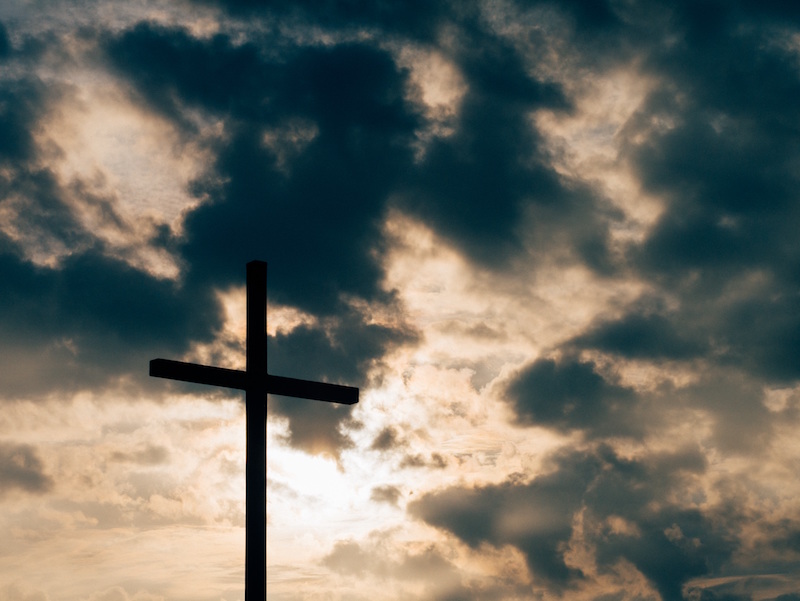It happened one year ago today.
Dozens of gunshots rang out in the historic sanctuary of Emanuel AME Church during a midweek prayer meeting. It was six minutes of unmitigated terror that claimed the lives of nine people and elicited a collective gasp from around the world. The shooter was an angry young racist who desired to stir up hatred and ignite a race war.
He failed. Why?
Deep Gospel Unity
Just two days after the grisly murders, family and friends of five of the victims gathered at the Charleston County Courthouse (one block from our church offices) for the bond hearing. The hearing provided an opportunity to speak directly to the killer. To everyone’s astonishment, one by one the victims’ family members stood and expressed forgiveness. One by one they graciously conveyed that they were praying for him. Like millions of others, I was amazed at this authentic display of gospel fruit. Rather than respond with hate, they resolved to respond with love. Their words of forgiveness rang infinitely louder than the murderous gunshots two days before. Their courageous response sparked a public display of love and unity across racial lines as perhaps never seen before in Charleston.
In the days following the shooting, thousands of people—black and white—gathered in loving solidarity at the foot of “Mother” Emanuel. Due to the large crowds, law enforcement blocked off a considerable section of Calhoun Street. Surprisingly, there were no protesters or angry speeches; no riots or vandals. Other parts of the country have experienced these kinds of hostilities in the aftermath of racial violence. But not Charleston.
By God’s grace, what filled the streets near Emanuel AME were persons from different backgrounds gathering in loving solidarity to make beautiful music, sing gospel praise, and offer earnest prayers. The atmosphere was unforgettable. The singing was amazing. Led mostly by black song leaders, large sections of the crowds became spontaneous choirs.
Like many others who gathered, I was deeply moved by a range of emotions. I wept over the sheer wickedness that would lead someone to walk into a prayer service and kill nine persons because of the color of their skin. I felt intense anger at the senseless taking of so many lives—siblings, parents, grandparents, pastors, friends. Mostly, though, I was overcome with a sense of Christ-centered hope as I joined hands with black and white brothers and sisters, rejoicing that in Christ we are one body (Eph. 4:1–16) and that nothing—not even horrific acts of terror—can “separate us from the love of God in Christ Jesus our Lord” (Rom. 8:39). Indeed, together we celebrated through song and prayer the glorious promise that “the sufferings of this present time are not worth comparing with the glory that is to be revealed” (Rom. 8:18).
Deep Gospel Seeds
As a church-planting pastor in Charleston, I heard from many friends and acquaintances during this difficult time. They wanted us to know they were praying for our beloved city. Many expressed amazement at the way our community responded in the wake of this tragedy—especially in what was, in antebellum times, the chief gateway of the Southern slave trade. Why didn’t this nefarious provocation elicit the desired race war? Why, instead, as one black brother in Christ shared with me in front of Emanuel AME, did it trigger a grace war—a war in which love conquers hate?
Surely Charleston’s rich heritage of gospel ministry has something to do with it. From its founding in 1670, the gospel of Jesus has been trumpeted from countless pulpits. During colonial times Charleston was one of few towns to tolerate Protestant churches of differing stripes. French Huguenots, Anglicans, Presbyterians, Baptists, Methodists, Lutherans, and Congregationalists were all represented in the city from its earliest years. Emanuel AME has existed since 1816. Some of these historic churches continue to faithfully preach the gospel today, as do many newer congregations. Gospel seeds have been planted in Charleston soil for centuries.
One notable sower was the Rev. John L. Girardeau (1825–1898). A native of South Carolina, Girardeau was raised in the Charleston Lowcountry. After graduating from the College of Charleston he moved to the state capitol and attended Columbia Theological Seminary from 1845–48. Finishing seminary, Girardeau was licensed to preach by the presbytery of Charleston to serve as pulpit supply for mostly rural congregations. Those who heard him quickly recognized this was no common preacher. Years later a member of his church described the Lowcountry preacher as throwing his “whole self—body, mind, and spirit—into his preaching, speaking with a fervor such as I have rarely seen equaled in the pulpit, and which deeply impressed his hearers with his zeal for God and for their souls” (Preachers with Power: Four Stalwarts of the South, 146).

Rather than exercise his extraordinary gifts in a prominent pulpit, however, Girardeau had a unique heart for the Lowcountry slave population. He accepted a call from Second Presbyterian Church in 1854 to serve as pastor of a new black mission church a short distance away on Anson Street.
Girardeau’s love for and ministry to slaves ruffled many feathers in the highly paternalistic Charleston society of his day. He was innovative and forward-looking in ways that were frowned on by many. Yet the fruit of his ministry was abundant.
When he started the mission church, there were only 36 members. Yet over the next six years, the congregation grew to more than 600 members with 1,500 attending every Lord’s Day (approximately 10 percent being white). Such large crowds thronged to hear Girardeau’s preaching that a massive new building was erected on the corner of Calhoun and Meeting Streets. Zion Church was perhaps the largest church building in South Carolina.
Ministering within the complex and thorny structures of antebellum society, Girardeau’s Christ-centered preaching was a powerful instrument to both blacks and whites, the effects of which bore fruit for generations (Preachers with Power, 132; c.f. Our Southern Zion: A History of Calvinism in the South Carolina Low Country, 1690–1990, 189–99).
Good Out of Evil
In addition to Charleston’s rich gospel heritage, and the staggering display of forgiveness by the victims’ families, last year’s unsuccessful attempt to incite a race war owes to God’s mysterious way of bringing good out of what man purposes for evil (cf. Gen. 50:15–21; Rom. 8:28). Indeed, the Lord overrules evil for his glory.
In the hours following the shootings, no one would’ve thought anything good could come of it. But God’s ways are higher than ours. He takes the vilest offenses and employs them to serve his purposes. He brings forth beauty from ashes. In the face of one of the worst atrocities in our nation’s history, God magnified the power of the gospel. Moreover, he fostered a greater resolve to love one another across racial divides.
God’s love and truth prevail in the hour of darkness. And is there any greater example of this work than Calvary?
Many of Jesus’s followers thought, What good could come of him being mocked, beaten, scorned, and nailed to a wooden cross? Surely nothing (see Mark 8:31–33; Luke 24:13–27). But through his substitutionary, wrath-bearing death, Christ purchased redemption for sinners. The worst crime in history— the unlawful trial and murder of the Son of God—was ordained by God himself to bring salvation to the world (cf. Acts 2:22–24).
“Oh, the depth of the riches and wisdom and knowledge of God! How unsearchable are his judgments and how inscrutable his ways” (Rom. 11:33).
Fullness of Joy Forever
One year ago today, nine worshipers were ushered from Emanuel AME’s historic sanctuary to heaven’s eternal sanctuary (2 Cor. 5:8). Now in the presence of God, they would never choose to return. Our brothers and sisters now possess the fullness of joy.
The deaths of the Emanuel Nine were not in vain. On this solemn day of remembrance, then, let us remember the lives that were lost—Clementa Pinckney (41), Cynthia Hurd (54), Sharonda Coleman-Singleton (45), Tywanza Sanders (26), Ethel Lance (70), Susie Jackson (87), Depayne Middleton Doctor (49), Daniel Simmons (74), and Myra Thompson (59). Let us pray for divine comfort for those family members and friends who continue to mourn their deaths. Let us pray and work for the eradication of racism from our hearts, churches, and communities. And let us rejoice that God’s grace often shines brightest when circumstances are most dark.
Be still, my soul: when dearest friends depart,
And all is darkened in the vale of tears;
Then shalt thou better know his love, his heart,
Who comes to soothe thy sorrow and thy fears.
Be still, my soul: thy Jesus can repay
From his own fullness all he takes away.
– William H. Monk (1875)
Is there enough evidence for us to believe the Gospels?
 In an age of faith deconstruction and skepticism about the Bible’s authority, it’s common to hear claims that the Gospels are unreliable propaganda. And if the Gospels are shown to be historically unreliable, the whole foundation of Christianity begins to crumble.
In an age of faith deconstruction and skepticism about the Bible’s authority, it’s common to hear claims that the Gospels are unreliable propaganda. And if the Gospels are shown to be historically unreliable, the whole foundation of Christianity begins to crumble.































